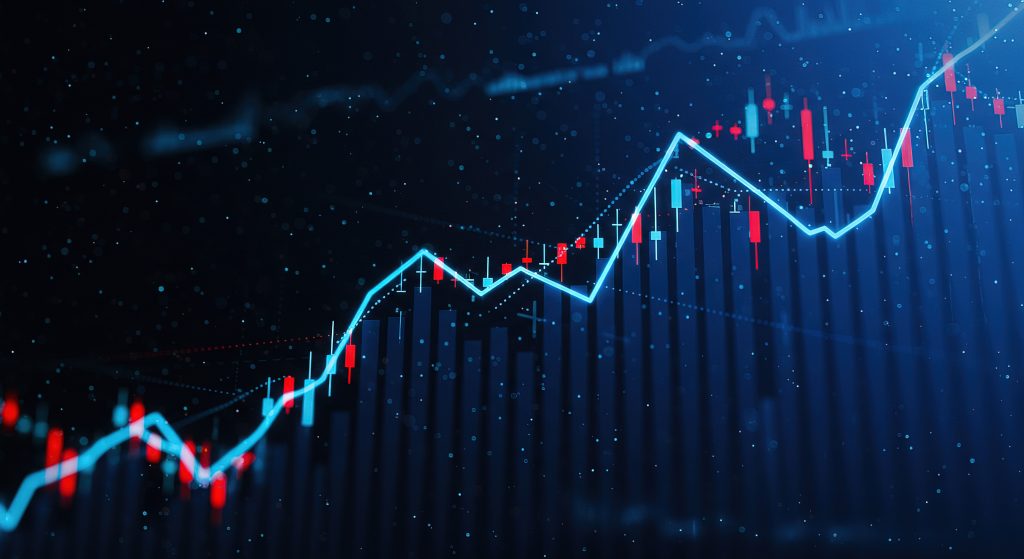Time in the market beats timing the market: The importance of staying invested

You may have heard the saying, “It’s not about timing the market, but about time in the market”. The phrase speaks to the likelihood of better returns made from time spent staying invested rather than strategically selling out, then buying back into markets.
When we experience intense market swings, it’s human nature to be concerned and feel unsettled. But it’s important to remember that market recovery isn’t a matter of ‘if’, but ‘when’. Typically, staying invested in well diversified, risk-aware portfolios is the best way to navigate uncertain market performance.
Trump’s tariff announcements in early April triggered markets to respond to trade policies at a magnitude never before seen, but many investors will remember facing similar turbulence in the not-so-distant past.
Below, we’ll look at what timing the market really means, why it’s so risky and what previous cycles have been able to teach us.
What does ‘time in the market beats timing the market’ really mean?
There’s an adage that claims time in the market beats timing the market. In other words, staying invested in the long run, through the ups and downs of the market, can deliver better outcomes than jumping in and out.
The expression is rooted in research and historical data. Research shows that those who stay invested over the long run in a well-diversified portfolio will generally do better than those who try to profit from turning points in the market.
One reason staying invested works well is that the longer you invest, the more stable your returns tend to be. For example, if you had invested in global stocks for just one year since 1970, your results could have been very good or very bad – gains of up to 70%, or losses of as much as -36%. But if you had stayed invested for 10 years at a time, the ups and downs would have evened out. Over those longer periods, the best average yearly return was 24%, and the worst was just a loss of -1%. 1
An important thing to remember is that most years are positive for the stock market. Over the last 100 years, the S&P 500 has recorded a positive return three out of every four years. That means, on average, investors in the stock market lose money once every four years. 2
A study by Bank of America looked at longer time frames and found that if you stay invested for five years, there’s only an 11% chance of losing money. Over 10 years, that drops to 6%. And if you stay invested for 15 years, the likelihood of a negative return drops to 0%. 3
You might also like: Central banks and sustainable finance
Why timing the market is so difficult (and risky)
Trying to predict exactly when to move in and out of the stock market, known as market timing, is extremely difficult, even for investment professionals. This strategy involves making investment decisions based on short-term market movements, with the goal of selling investments before prices fall and buying them again before prices rise. While it might sound simple in theory, in practice it requires getting two decisions right: when to exit and when to re-enter.
The challenge lies in the fact that market movements are often unpredictable and influenced by a wide range of economic, political, and psychological factors. Patterns that seem obvious in hindsight — such as a market peak or dip — are rarely clear in real time. Prices can move sideways (with no clear upward or downward trend) or react sharply to events that turn out to have only a short-term impact. These so-called “false alarms” make it difficult to know whether a downturn is a brief pause or the start of a more significant decline.
Emotions can also cloud judgment. During market downturns, fear can lead investors to sell at a loss, missing out on eventual recoveries. Conversely, after a strong rally, overconfidence may lead investors to assume markets will continue climbing indefinitely. These behaviours are often influenced by recency bias — the tendency to place too much importance on recent events rather than the bigger picture.
Perhaps the most significant risk of trying to time the market is missing out on the most profitable days — those sudden, often unpredictable surges that contribute disproportionately to long-term returns. By sitting on the sidelines during these rebounds, investors risk locking in losses and forgoing future gains.
For most investors, a more reliable strategy is staying invested over the long term. While markets do experience ups and downs, history has shown that time in the market beats timing the market – remaining patient and focused on long-term goals is often the most effective way to build wealth.
What happens when you miss the best days in the market?
Missing just a handful of the best-performing days in the stock market can have a significant impact on long-term returns. This is because market
Volatility
Research from Schroders illustrates just how costly this can be. Over the past 35 years, missing only the 10 best days in the market would have reduced total returns by around half. In other words, staying invested — even during periods of heightened uncertainty — is usually the more effective long-term strategy. 4
We saw this principle play out in March 2020, when global markets fell sharply in response to the onset of the COVID-19 pandemic. Rather than selling, maintaining our positions allowed portfolios to participate in the swift rebound that followed in the months ahead.
Remaining calm during periods of market stress and avoiding reactive decisions can help investors preserve long-term growth and avoid locking in losses unnecessarily.
You might also like: The impact of interest rate changes on investment portfolios
Staying invested through volatility: lessons from history
History teaches us that volatility is a feature of markets, not a flaw. While there’s no crystal ball to look into, we do have the patterns of previously volatile cycles to learn from. Those who stayed invested typically recovered faster and stronger.
During the start of the COVID-19 pandemic, around February to March 2020, the S&P 500 fell around 34% in just over a month. The market recovered from these lows by August that same year, which is considered one of the fastest recoveries in history.
Most recently, in early April 2025, President Trump announced sweeping tariffs against many countries around the world, causing the S&P 500 to plunge over 12% in less than a week. However, after a 90-day pause was announced, the market rallied to recover this initial loss by the end of the month. The market staged an 8.5% rally in just three hours in the immediate aftermath of the delay announcement on the evening of April 9th.
The power of purpose-driven, long-term investing
As impact investors, we naturally have a long-term view. We’re guided by the north star of our investment process, the UN’s
UN Sustainable Development Goals (UN SDGs)
By maintaining a longer-term investment horizon, we’re well positioned to stay focused during periods of market volatility. While actively managing short-term market movements, we’re anchored by a bigger picture — backing businesses and projects that create enduring value for both investors and society.
In this way, long-term, purpose-driven investing allows us to pursue stable financial growth while supporting systemic change.
In summary: Time wins. Timing doesn’t.
Even in the case of major financial crashes, time heals old wounds. The market is largely self-correcting in that it rewards well-performing companies and effectively ‘drops’ underperforming ones out of major indices. Time in the market beats timing the market in part because the chances of experiencing a negative return on your investment, or losing money, diminish the longer you’re invested.
That said, potentially more important than why time in the market works is why timing the market doesn’t. Frequently buying and selling isn’t only hard to do well, it also exposes investors to higher risks and typically will erode wealth over time.
Footnotes
-
Investec. (February 2019). Long-term investing: Make time your friend.Scroll to footnote
-
Ibid.Scroll to footnote
-
Ibid; MSCI data.Scroll to footnote
-
Schroders. $25,857: the cost of trying to time the market.Scroll to footnote




